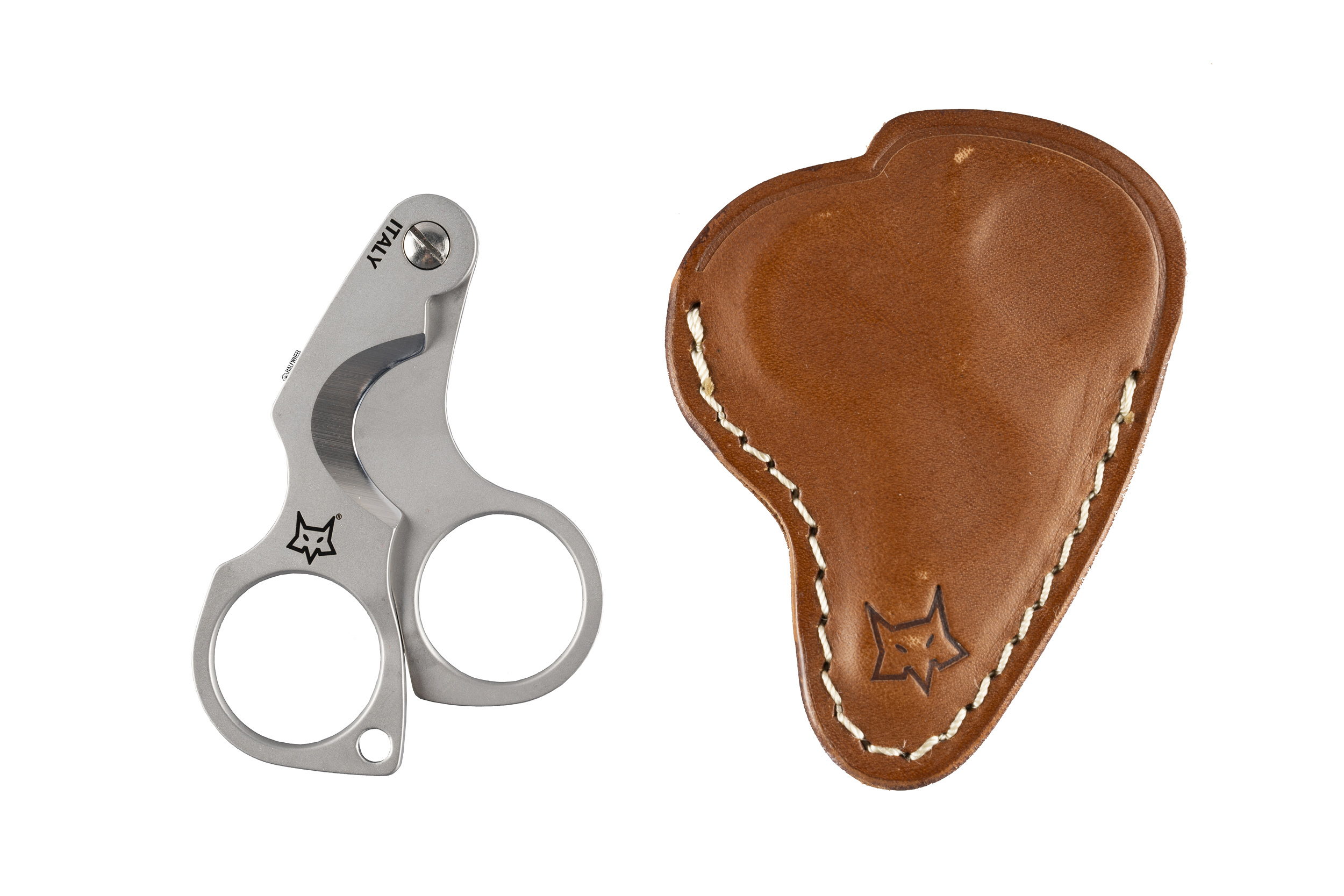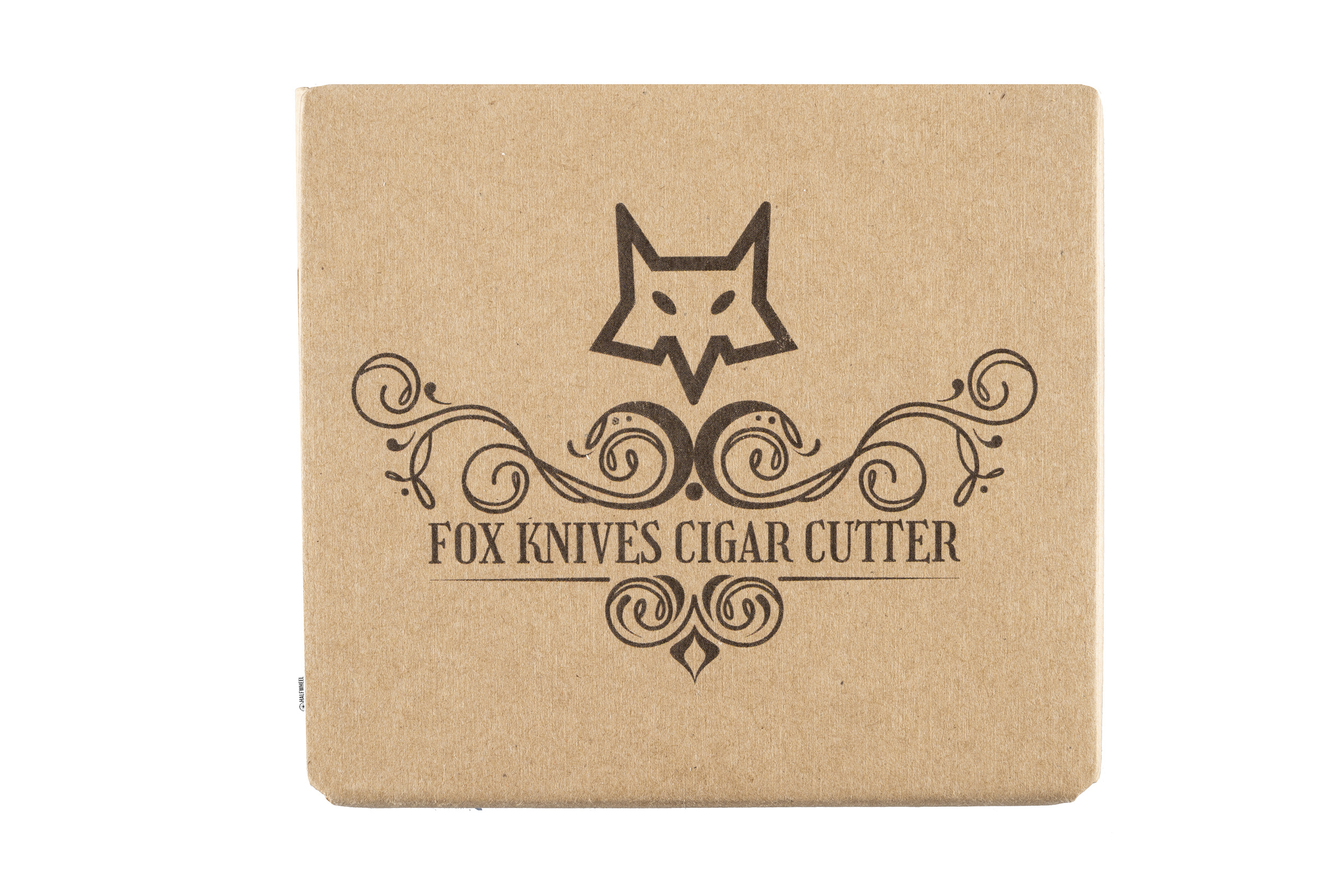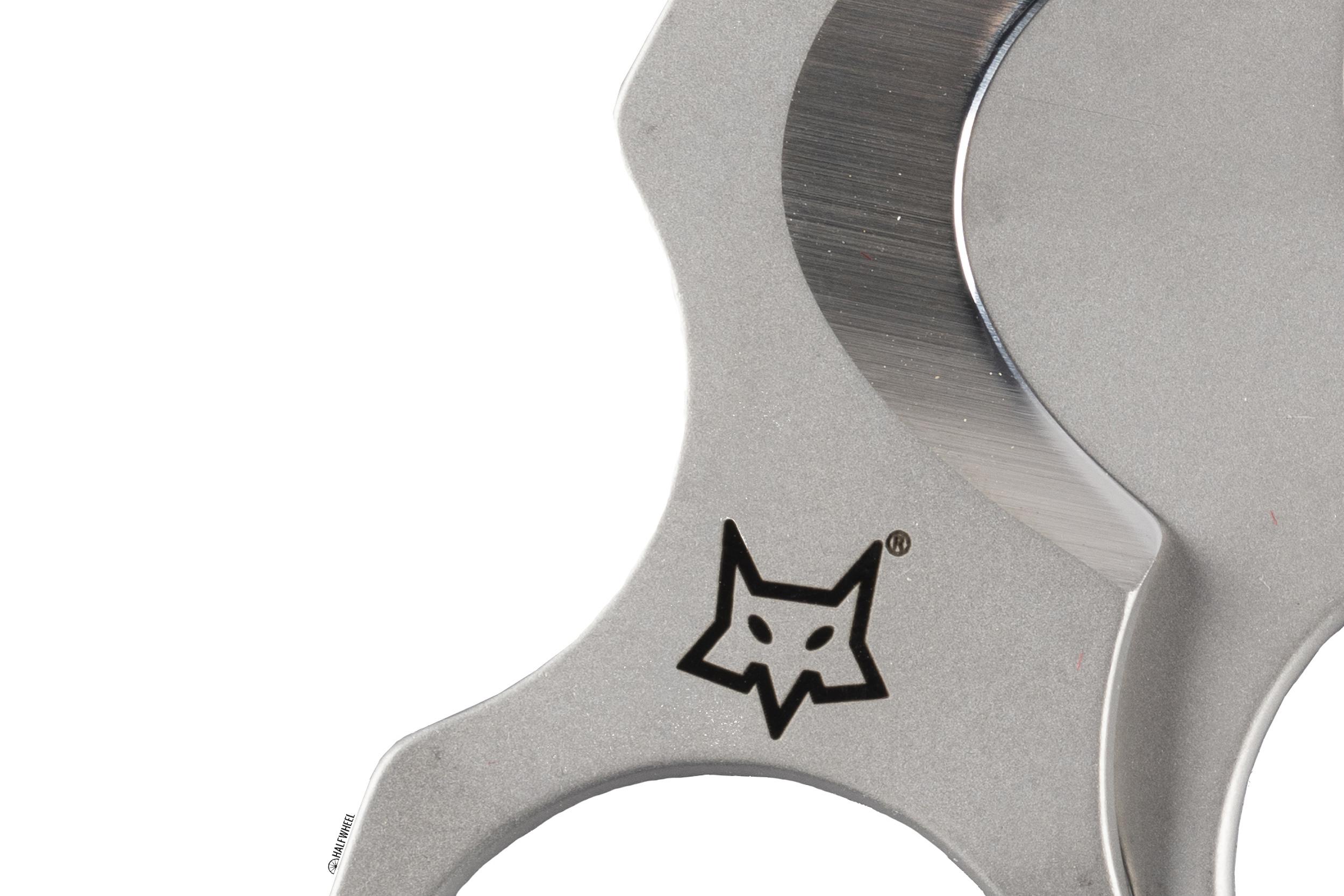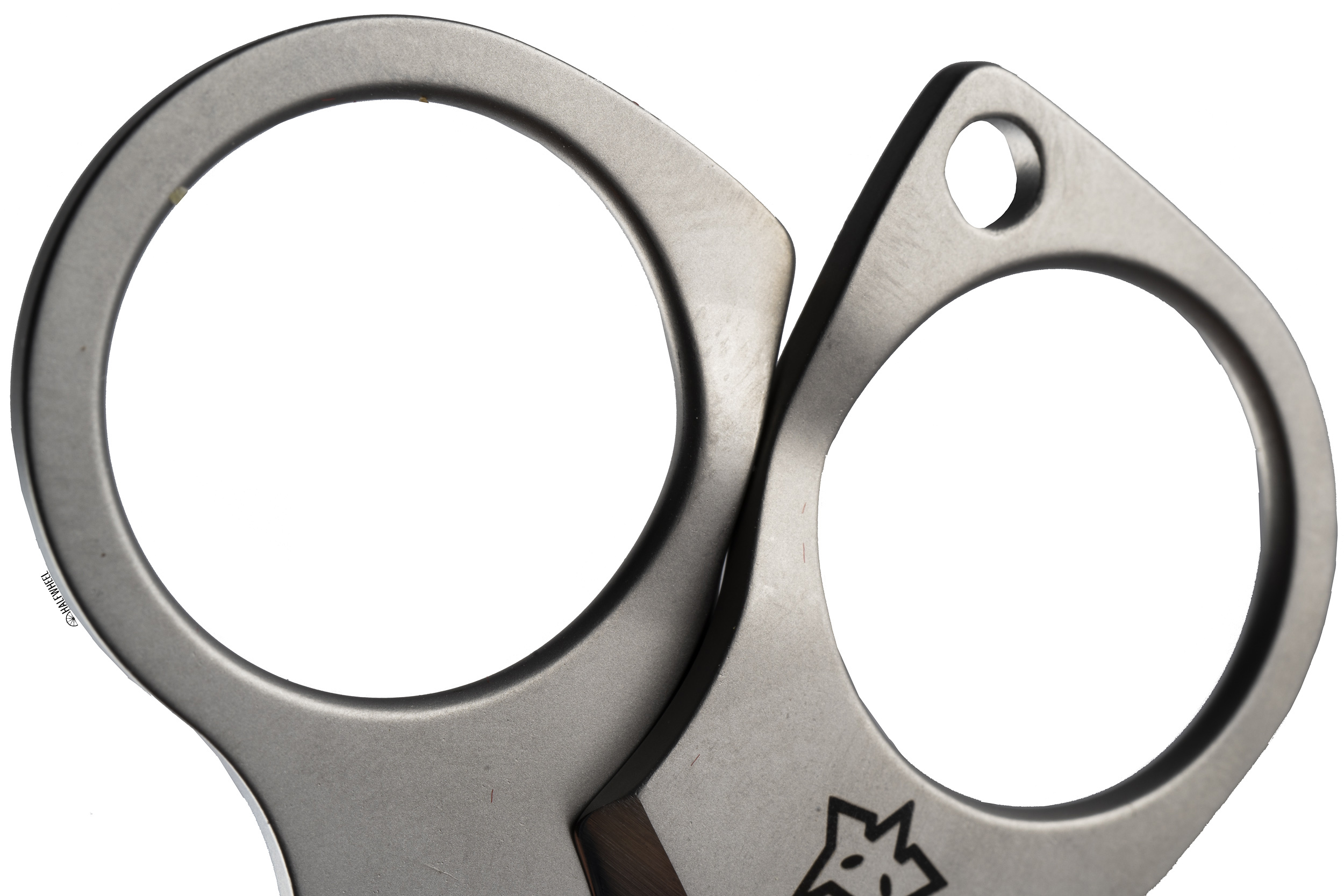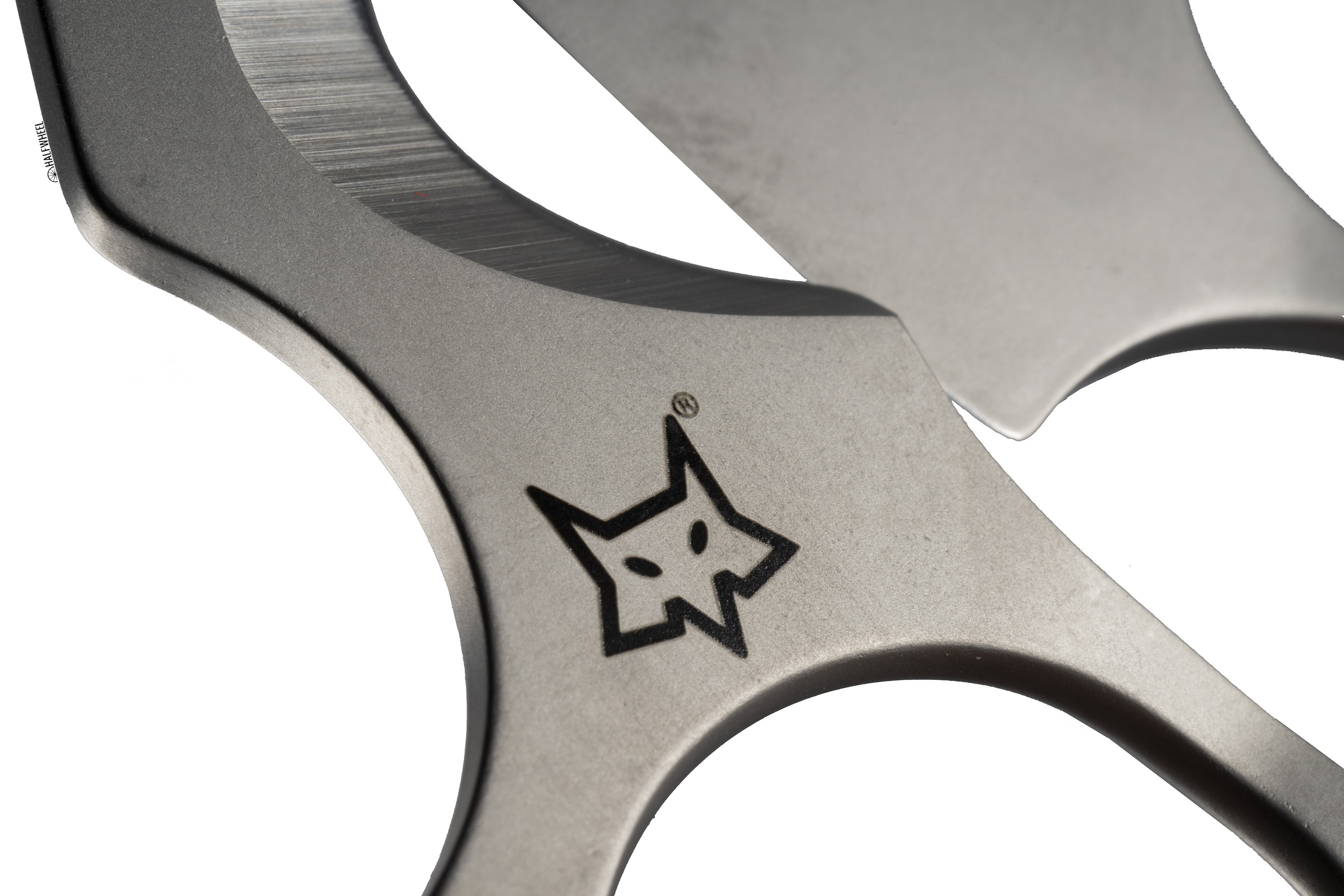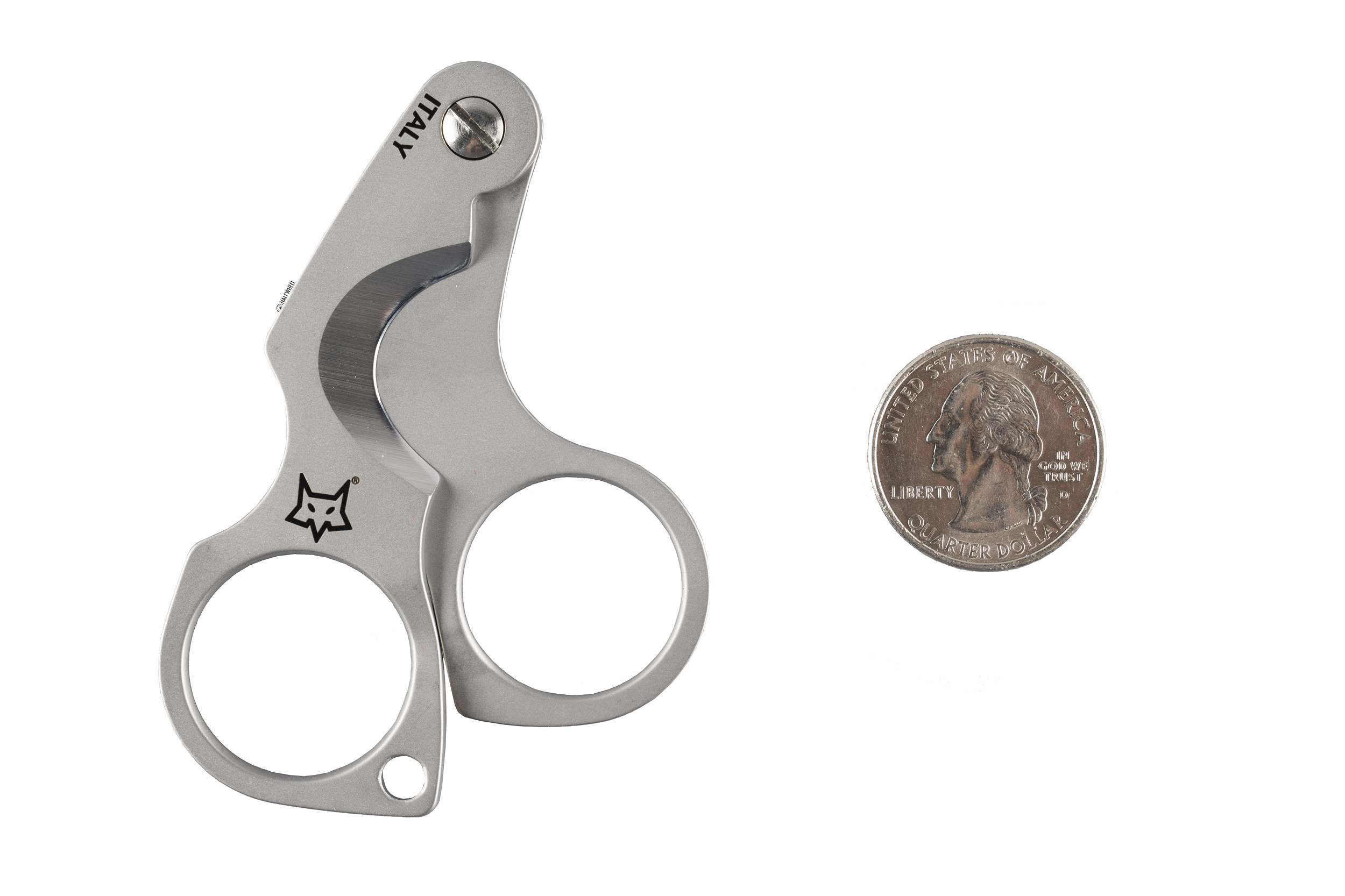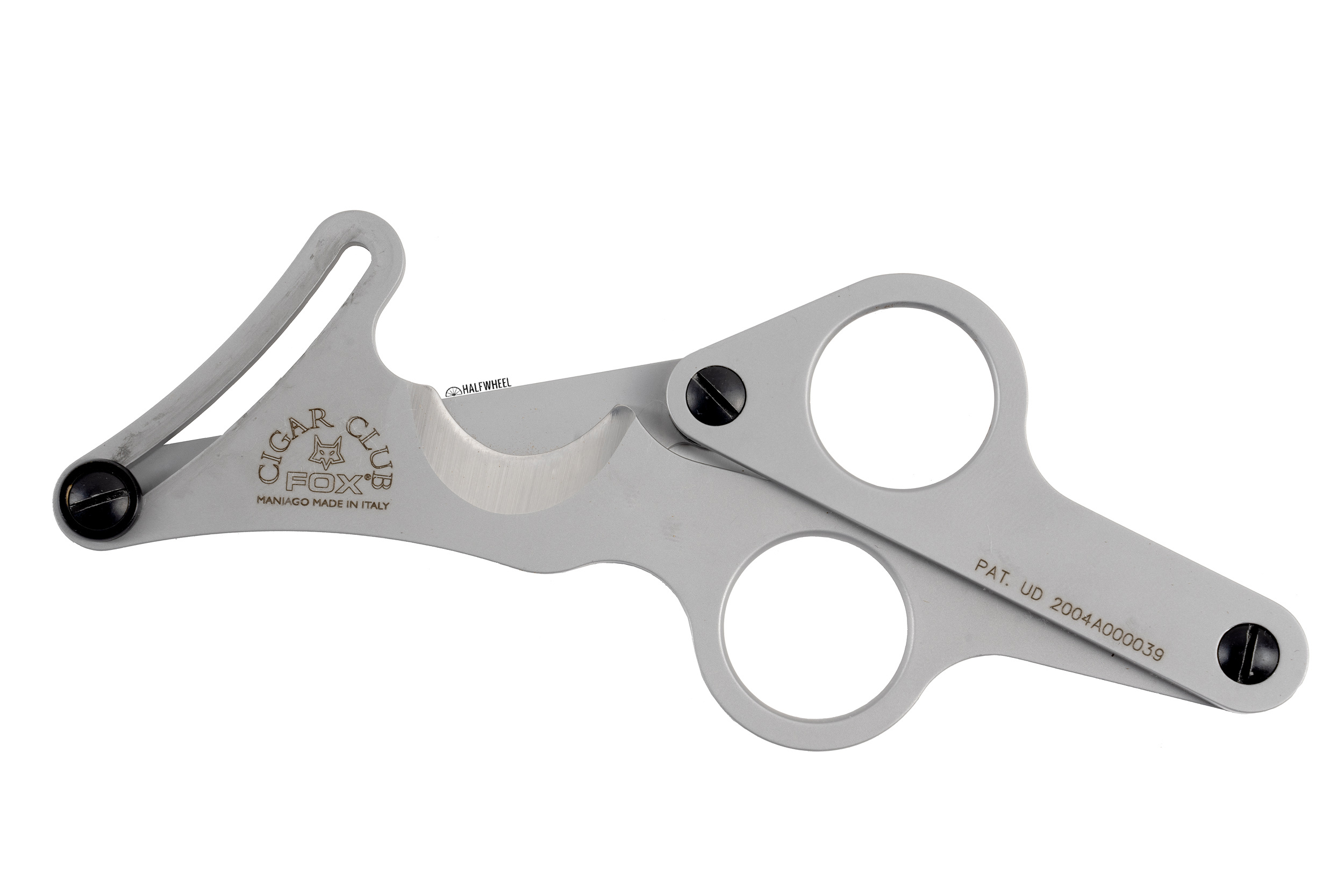Fox Knives is an Italian-based company that was founded in 1977 by Oreste Frati which has won numerous awards for its knives over the years, including “knife of the year” from Blade Magazine in 2019. In recent years, the company has produced a number of different cigar cutters, including the subject of today’s review, the Fox Figaro 747 Cigar Cutter, which was designed by Denis Simonutti.
Readers of this site will know Fox from my review of the Fox Knives 749 Cigar Cutter, which has become Charlie Minato’s daily cutter and might be my daily if I wasn’t constantly testing out new cutters for reviews like this.
WHAT IS IT?
Small, thin and light, the Fox Figaro 747 is a hybrid of a single guillotine cutter and a pair of cigar scissors. It is made entirely of with 420J2B stainless steel that measures between 54-56 Rockwell hardness, which is about the hardness of the types of steel used for many French chef’s knives. Weighing just 25 grams, the cutter measures 2.9 inches long and 1.97 inches wide when closed and 5.8 inches long when fully open.
While there are three different versions, the base model—and the model that I tested for this review—features an exterior that has been “bead-blasted”, which basically means that small beads or spheres are shot against the metal at high speeds to give it a dull satin-like finish and to make it more scratch-resistant. The other two versions are the Figaro 747 A, which features an acid-etched finish; and the Figaro 747 D, which is made of Damascus steel that uses a herringbone pattern.
HOW MUCH DOES IT COST?
There are currently three different versions of the Fox Figaro 747, all of which feature the same design, albeit with different finishes or metals:
- Fox Figaro 747 (Bead-Blasted Finish)— $59.95
- Fox Figaro 747 A (Acid-Etched Finish) — $79.95
- Fox Figaro 747 D (Damascus Steel) — $314.95
HOW DOES IT WORK?
If you’ve ever used a pair of scissors, then you will have no issues using the Figaro 747: to use the cutter, you insert two fingers in the appropriate openings and open the cutter by pulling open the handles. In my case, my middle finger goes in the bottom/left opening while my thumb goes in the top/right opening.
To actually cut a cigar, you then position the cap of the cigar into the opening that has been revealed and put your index finger into the notch that is cut into the body just above the left/bottom handle. Once your fingers are in the cutter, you open the blades up like you would a pair of scissors—moving your fingers away from one another—which reveals a half-moon opening on the bottom part of the cutter. Place the cap inside this opening and then move your fingers back together until the blade is closed.
One major point to be aware of is to always have the cigar facing the same way, so that the cap—i.e., the end that you are cutting off—is facing away from the blade with the beveled edge, while the larger section of the cigar left over—i.e. the part you will actually smoke—is on the same side as the Fox logo printed on the cutter.
The action on my cutter is extremely smooth and I had no noticeable issues with the blades becoming loose during the time I was testing it. In addition, I found that pushing the cap against the semi-circle opening—very slightly, as too much pressure will just crack the cap—while pushing the blade through the cigar helps stabilize the entire cutter, and thus leads to cleaner cuts.
THE GOOD
- Small, Light and Thin — For those needing a nice option that can be easily carried around with no fuss, you can’t get much more unobtrusive than this cutter.
- Excellent Price Point — The price point of $55 (for the base model) is a steal for the quality of the build and the cuts that you get.
- It Cuts Cigar Caps Cleanly (Most of the Time) — There were a couple of times when I ended up with some questionable results, but the vast majority of the time, the caps of the cigars I used this cutter on were cut cleanly.
- You Can See Exactly What You Are Cutting — As with the larger version, you can see exactly what you are cutting at all times, something that I have found I really miss when using cutters where that is not the case.
- Built-In Notch For Your Thumb Works Very, Very Well — Not only does it give extra stability—virtually a necessity for a cutter that is both this thin and this light—but it also helps with the overall balance.
- Key Ring Hole — The larger handle also includes a built-in hole so that you can carry the cutter on your keyring if you so desire.
- Included Leather Sheath is Extremely High Quality — It is not exactly unusual for cutters to come with a leather sheath of some sort, but a number of the ones I have reviewed have lacked in the quality department, even when the cutter costs quite a bit more than the Fox Figaro. The included sheath is extremely nice, fits the cutter like a glove and the fact that it is included in the $55 price point is frankly insane.
THE BAD
- Finger Holes Are Too Small — Granted, I am a big guy, but I find it hard to believe that even a slightly smaller person would not have problems getting their fingers in and out of the holes on this cutter without any issues at all.
- It Might Be a Little Too Light — While the lightweight makes it convenient to carry around—seriously, without the sheath I oftentimes forgot the cutter was in my pocket—it really does not help the balance, especially when cutting larger cigars.
- Not a Cutter For Large Cigars — Sure, you can cut the caps off of just about any size or vitola you choose, but if you are looking to cut more than that off of a cigar that is larger than about 54 ring gauge, you’re going to have a bad time.
- Getting Flat Cuts Requires More Concentration — As is the case with the Fox Knives 749, this is one of those cutters where it is a bit more difficult to accurately judge how flat your cut is about to be. While the cut is almost always going to be a clean line, whether or not that line is perfectly flat or slightly off takes a bit more work.
THE COMPETITION
While there are a number of cigar cutters from different manufacturers that feature a somewhat similar design of combining scissor handles with a cigar cutter, perhaps the most obvious competition to the Fox Figaro 747 Cigar Cutter is the Red Horse Condor Cigar Cutter, which features a similar design, albeit at more than five times the price. Oh, and does not cut cigars nearly as well.
Additional Competitors
- Fox Knives 748/35 ($45) — This additional option from Fox Knives is lightly smaller at 2.55 inches long and features a slightly different design despite being made of the same materials. However, the Fox Figaro 747 can cut slightly larger cigars and includes a key ring hole on the handle that the 748/35 lacks.
- Fox Knives 749 ($85) — If you love the 749 and are hoping that this is a pocketable version, sadly, the 747 is not that. If you like the 749, you should probably continue to use the 749. The 749 not only has a unique cutting mechanism not found on the 747, but it also cuts the caps of larger cigars better. That being said it’s more expensive and not nearly as portable.
- Credo Synchro ($71.50) — Combining a guillotine and scissor cutter into one product, this cutter features double-axis, gear synchronized, self-sharpening blades and retails for a bit more than the Fox 747, but also only cuts cigars up to 56 ring gauge. I have not used this, so I have no point of comparison.
- Screwpop Chopo ($29.95) — The Chopo is not a good cigar cutter.
- XIKAR MTX Multi-Tool ($54.95) — The industry standard for cigar scissors works well, has a fragile bottle opener amongst some other useful tools and folds up nicely.
SHOULD YOU BUY IT?
Yes, but with one large caveat.
Although the Fox Figaro 747 is extremely portable, extremely well-made and features very sharp blades, it is really best suited for cigars under about 54 ring gauge, as the smaller blade has a tendency to damage the caps or wrappers on cigars larger than that. Does it cut cigars better than a good double guillotine cutter? Probably not. But if you want a well-made, unique and portable cigar cutter—and are willing to forgo using it on cigars over 54 ring gauge—the 747 is a compelling answer at a price that could be a lot higher.

